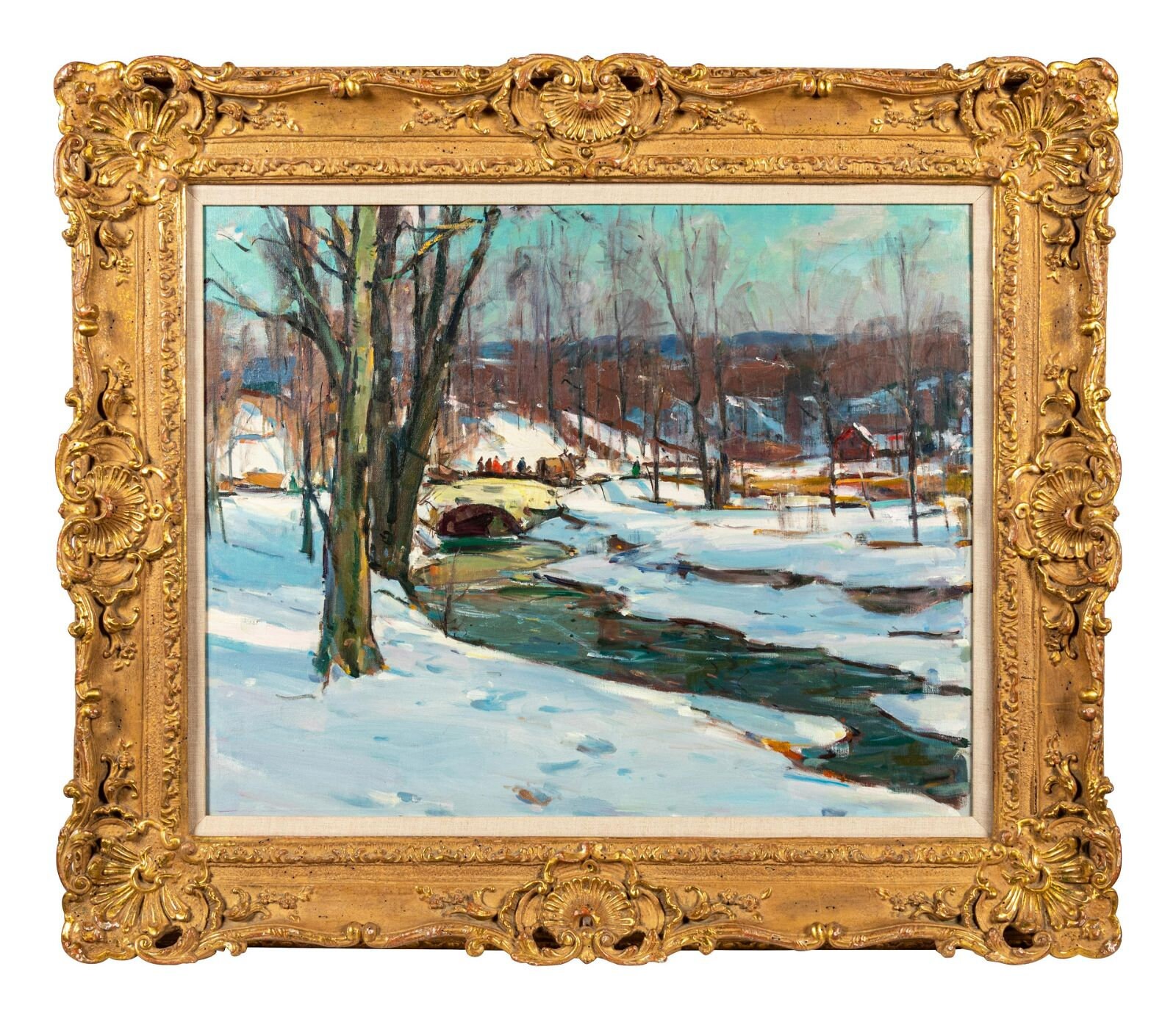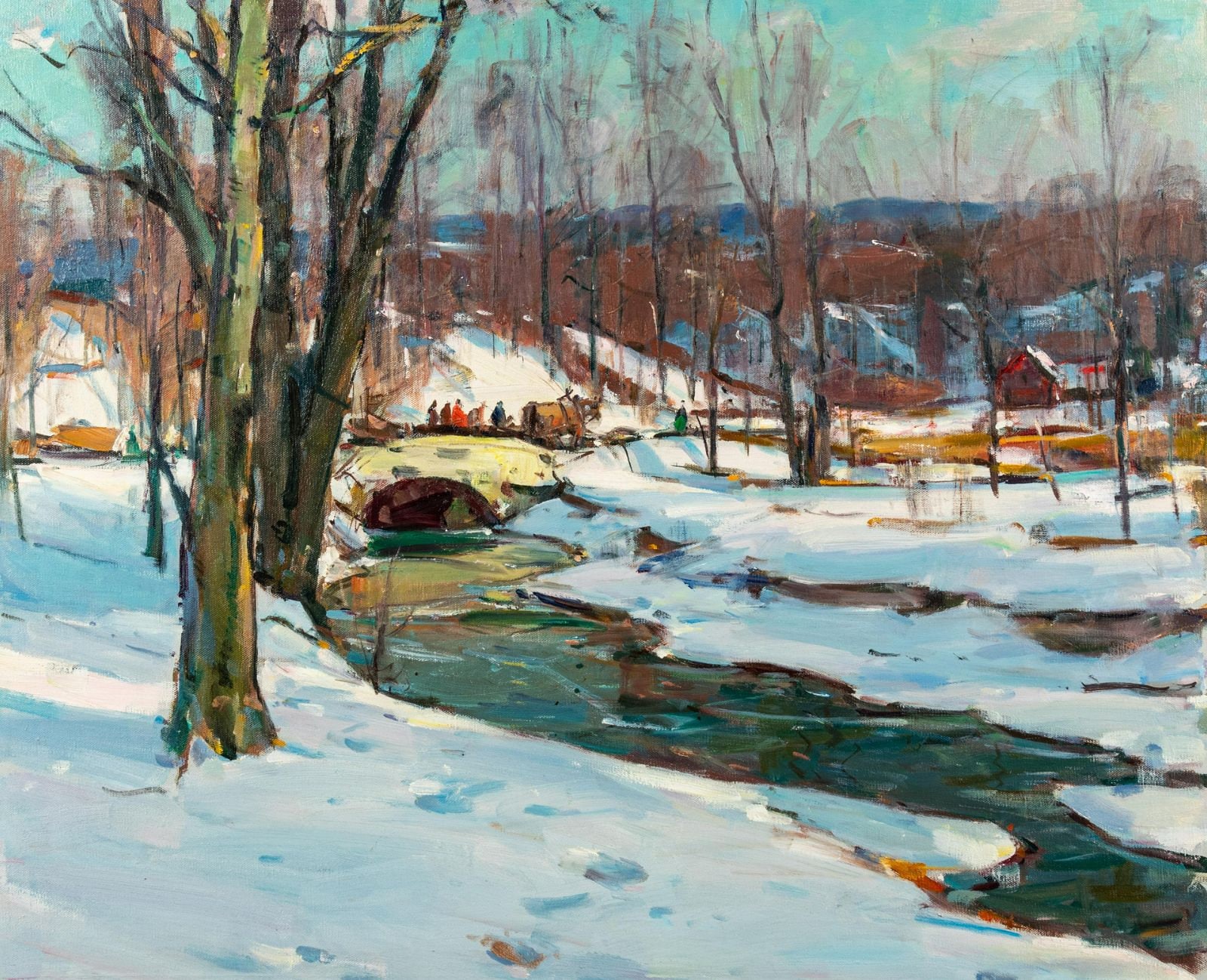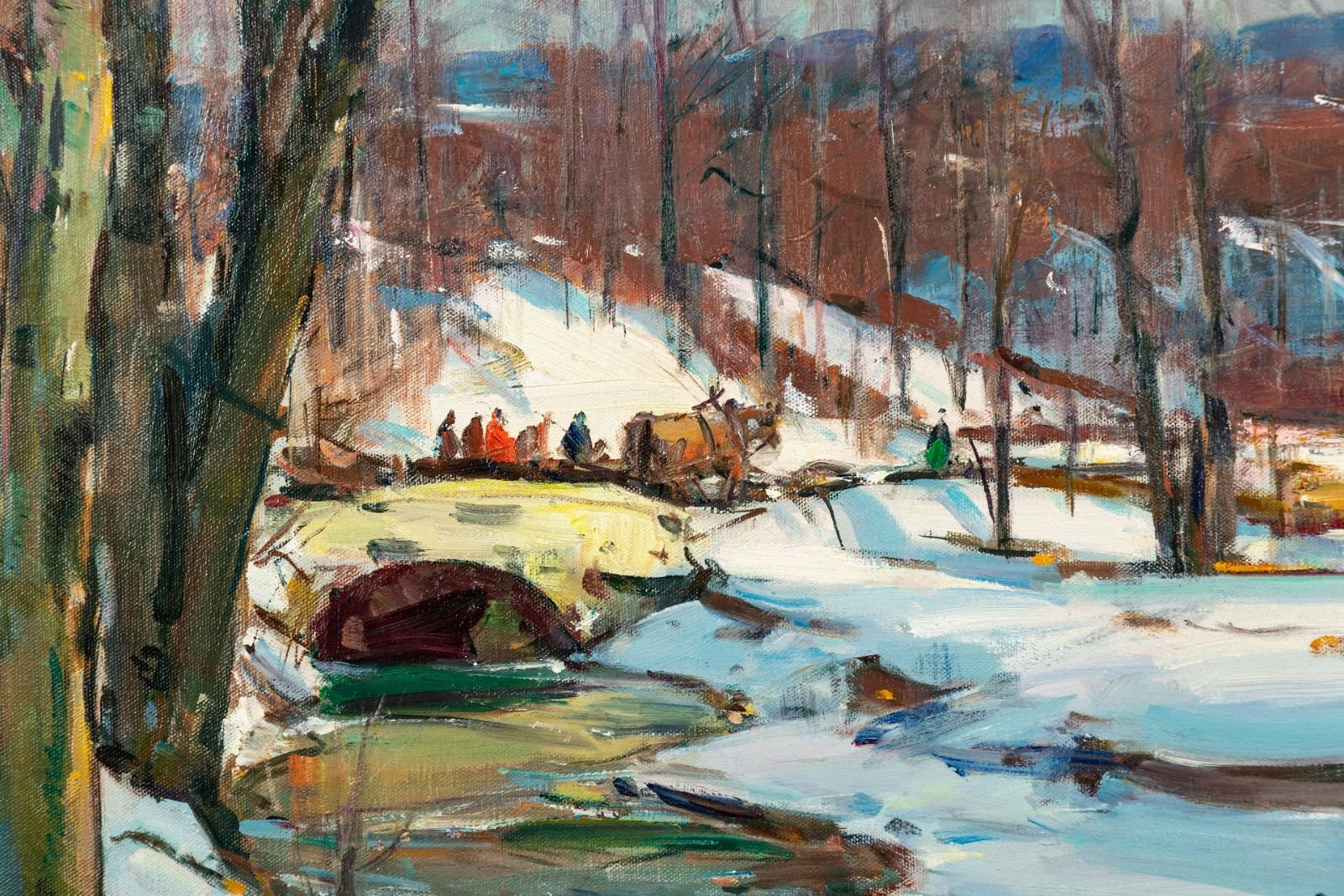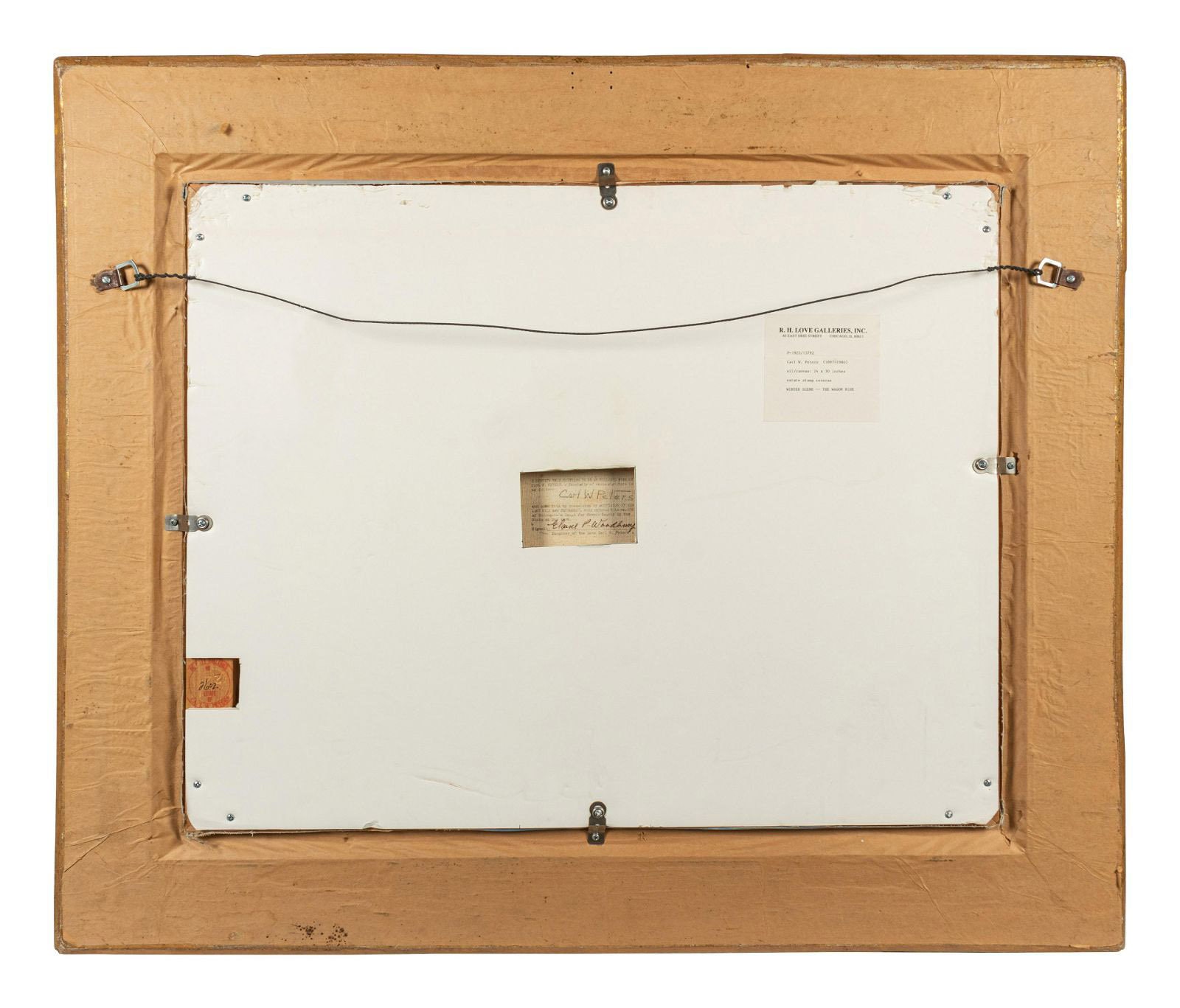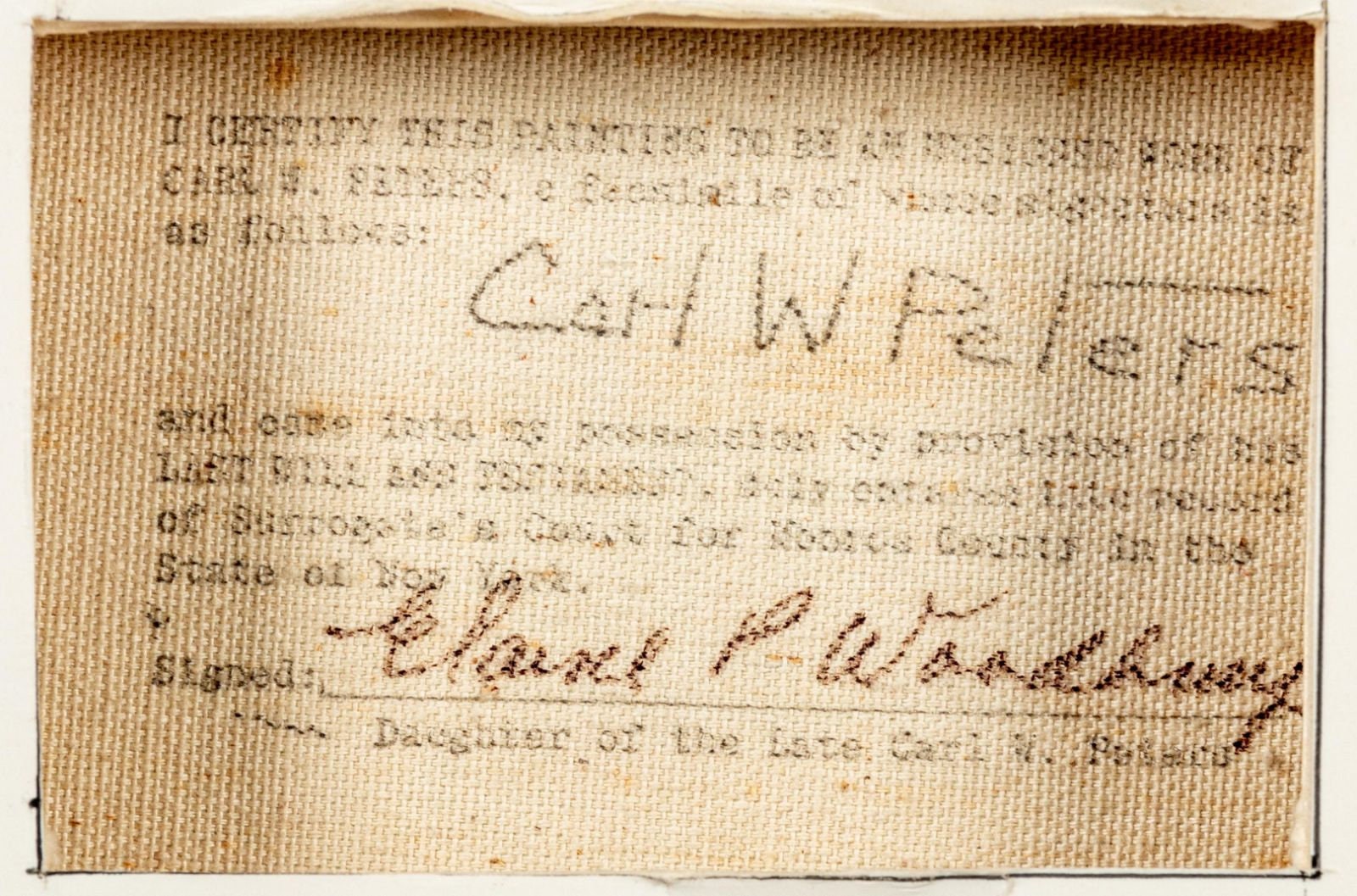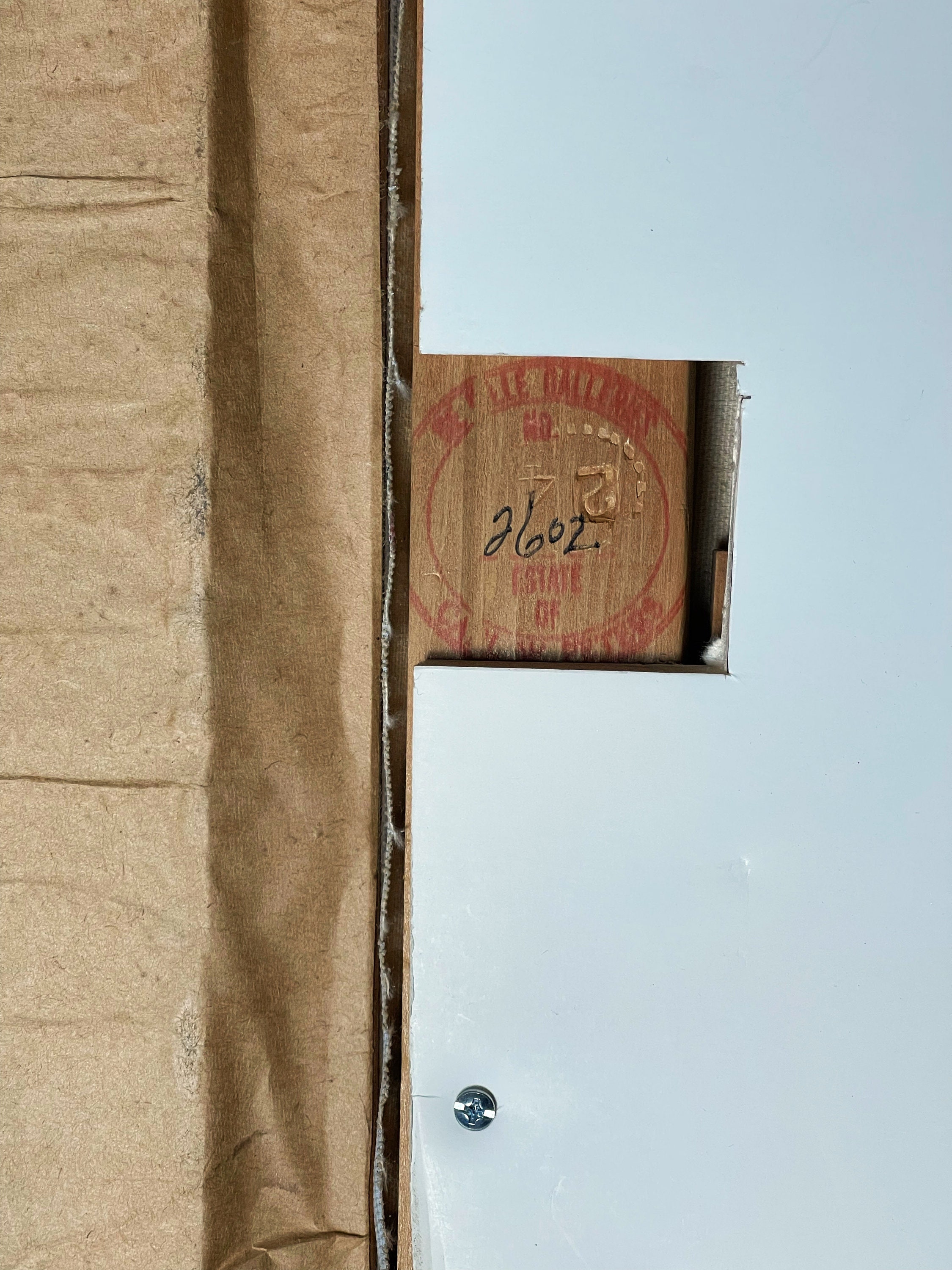CARL WILLIAM PETERS Winter scene - The wagon ride, original oil on canvas, Coa
$12,500.00
Carl William Peters
"Winter scene - The wagon ride"
Original Painting
Oil on Canvas
Artist: Carl William Peters"
Title: Winter scene - The wagon ride
Medium: Oil on canvas
Edition: Original painting, unique work
Signed: Not signed. Estate stamp signed by Elaine Peters Woodbury, daughter of the artist
Accompanied by a gallery certificate of authenticity
Condition: Excellent
Framing: Original framing (some signs of age/wear, very good overall condition)
Provenance: Estate of the artist
DeVille Galleries, Melrose, California
R. H. Love Galleries, Chicago, IL
Framed Size: 33 1/2" X 39 3/4"
Artwork: 24" X 30"
Artwork will be shipped crated and insured
Carl William Peters
Carl Peters was one of America's successful and intriguing artists, a master landscapist and genre painter within the realist tradition, represented in his time by the American Scene and regionalist movements. Peters also executed a series of murals under government sponsorship during the Depression era.
For his urban and rural snow scenes, Peters was the winner of three Hallgarten Prizes at the National Academy of Design. He also won numerous other prizes throughout his career, including the first ever Fairchild Award in Rochester (1924).
He exhibited his works regularly at the National Academy, the Pennsylvania Academy of the Fine Arts, the Corcoran Gallery, the Art Institute of Chicago, the Syracuse Museum of Fine Arts, the Fort Worth Museum, the Rockport Art Association and the Memorial Art Gallery of the University of Rochester.
When America joined World War I, Peters became a soldier and was sent to France where he worked as a camouflage artist. After the war, he returned to Rochester with vivid front-line sketches and even a few paintings. Besides sketching and painting every day, and acquiring the fundamentals of art education in Rochester, Peters continued his training in New York City. He enrolled in the Art Students League in New York in the fall of 1919. Soon Peters took advantage of the League's summer school program in Woodstock, where he was exposed to more progressive ideas, including the "Ash Can" philosophy of Robert Henri; both Henri, whom Peters heard in Woodstock in the summer of 1921, and George Bellows deeply influenced him.
At Woodstock, Peters came into contact with the dynamic "Rock City rebels," including Andrew Dasburg, Henry Lee McFee and Konrad Cramer, who were developing what became known as a "rural cubism." Peters would slowly assimilate some of these influences as well as elements of Cézannesque formalism, by now (1920) widely accepted, into his own style. At the A.S.L., Peters studied outdoor landscape painting initially under Charles Rosen (summer of 1921), who at that time was vacillating towards modernism, then under John F. Carlson (summers of 1922 to 1924), who became another important mentor.
While winning impressive awards from art institutions, Peters established a painting routine, spending the winters in Geneseeland, painting both urban and rural snow scenes, and the summers in the active artists colony on Cape Ann, Massachusetts, where he encountered Aldro T. Hibbard's milieu. As soon as Peters began to exhibit his works, in 1923, critics sensed something spiritual in his art; the Rochester art community realized that an impressive and genuine young artist had entered the scene. Away from home, Peters became a member of the Rockport Realist circle of Hibbard, William Lester Stevens, and Maurice Compris.
Then at the dawn of the Great Depression, Peters executed a huge, impressive mural, which showed his outstanding talents as a large-scale artist, far surpassing the demands of easel painting. Here he applied his expert knowledge of academic figure painting, integrating a complex design into an architectural setting.
Peters taught outdoor summer painting courses in Rockport and classes at the Memorial Art Gallery of the University of Rochester. Until his death in 1980, Peters maintained a studio at the farm in Fairport near the Erie Canal, and another in Rockport, where he produced an amazingly large group of fascinating American images. He joined the group known as the Rationalists (later called the Genseeans or the Genesee Group), the so-called liberal conservatives, who believed, as did many American Scenists and Regionalists that painting needed "real values, in religion, government, and art." Peters never lost sight of his goal to paint the ordinary American working people and to capture his own local "Spirit of Place."
Peters was given one-man shows in his native Rochester, several times, and toward the end of his life, the Rochester Art Club honored him with a special ceremony.
Works by Peters may be found at the National Museum of American Art, part of the Smithsonian Institution, in the Memorial Art Gallery of the University of Rochester, and in various private collections.
(Biography from R.H. Love Galleries)

